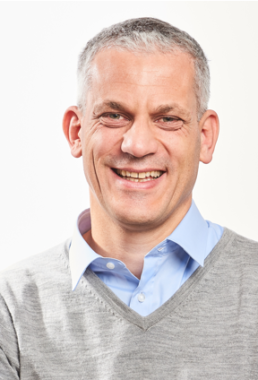Pioneering Sustainability: Offsetting Our CO₂ Emissions for a Greener Future
In an era where environmental consciousness is of great importance, we at Munich Venture Partners are proud to take our commitment to sustainability o the next level. For several years, we have been diligently calculating our carbon footprint in accordance with the Greenhouse Gas Protocol and - more importantly - taking concrete steps to offset it. As a result, for 2022 we have offsett 23t of CO₂e via a global portfolio of projects including a wind project, hydro electric power as well as solar power generation.
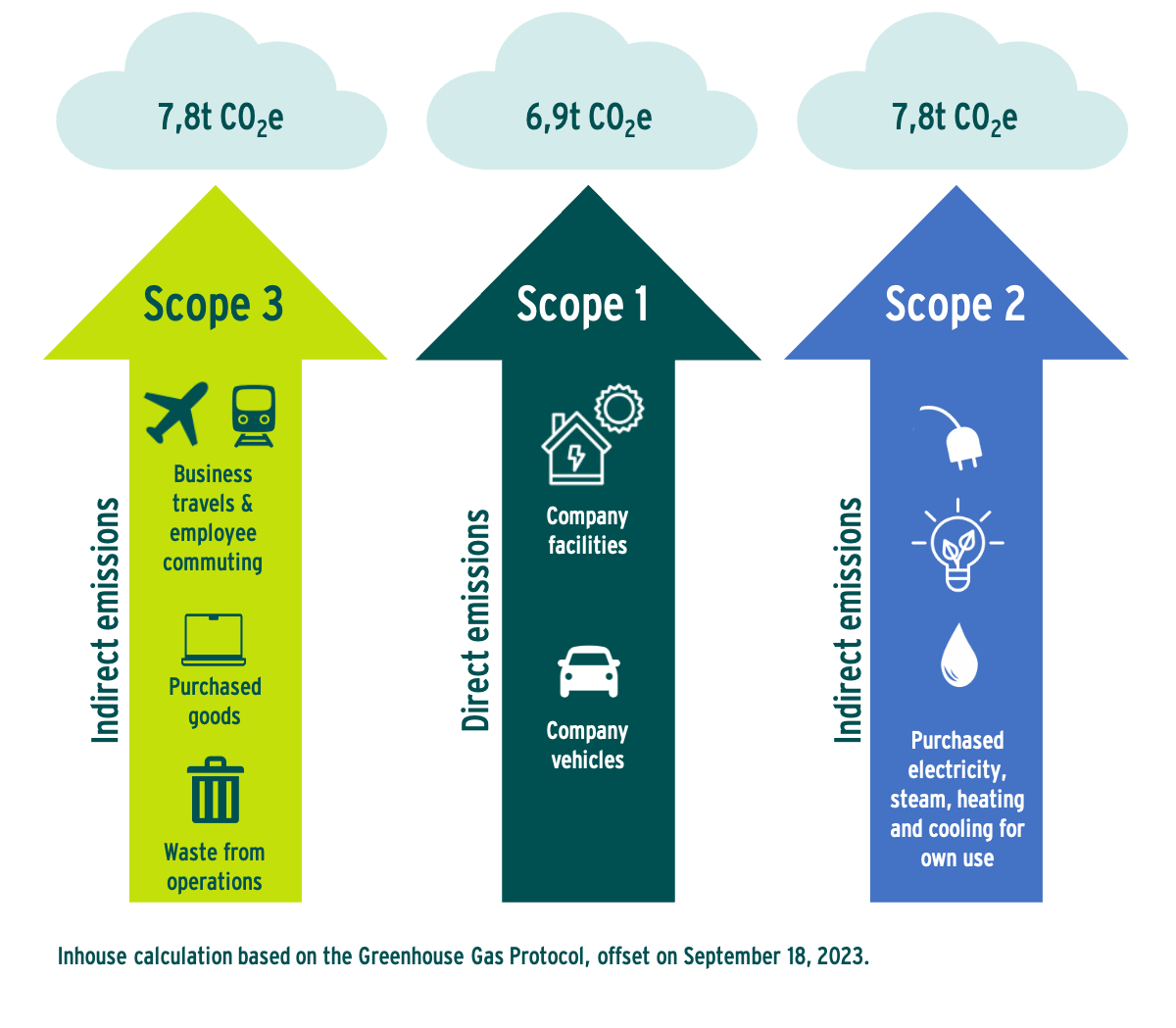 Climate change is no longer a distant threat but an imminent global crisis. As investors, we understand our role in shaping the future and recognize the impact our operations can have on the planet. By actively reducing our carbon emissions and offsetting the remainder, we're contributing to the preservation of our environment and taking responsibility for our carbon footprint. To accurately assess our carbon emissions, we follow the Greenhouse Gas Protocol, a widely recognized and respected standard for carbon accounting. Our comprehensive calculations consider emissions stemming from various sources, including energy consumption, transportation, and office operations.
Climate change is no longer a distant threat but an imminent global crisis. As investors, we understand our role in shaping the future and recognize the impact our operations can have on the planet. By actively reducing our carbon emissions and offsetting the remainder, we're contributing to the preservation of our environment and taking responsibility for our carbon footprint. To accurately assess our carbon emissions, we follow the Greenhouse Gas Protocol, a widely recognized and respected standard for carbon accounting. Our comprehensive calculations consider emissions stemming from various sources, including energy consumption, transportation, and office operations.
We firmly believe that addressing climate change is a collective responsibility, and we're proud to play our part. However, we acknowledge that there is always room for improvement. As part of our ongoing commitment to sustainability, we are exploring ways to further reduce our emissions.
As we continue on this path, we invite you to join us in making a difference. Together, we can create a more sustainable world for future generations. Watch this space for updates on our sustainability initiatives, and let's work together to combat climate change one step at a time.
MVP Sustainability Report 2022
In addition to generating superior financial returns for our investors, MVP’s investment strategy also focuses on investments generating positive environmental and societal impact. We therefore put great effort in our portfolio companies not only leaving the lowest environmental footprint possible as well as applying the highest social standards, but enhancing nature and society as a whole.To illustrate the ESG and impact development of our investees as well as our own sustainability efforts, MVP publishes a yearly sustainability report. Next to these topics, this year’s report also covers:
> Our approach towards sustainability
> The ESG performance of our investees as well as their contribution to the SDGs
> The MVP ESG champion
> Triple Top Line highlights from our portfolio
MVP joins forces with the Cleantech for Europe initiative
Europe has seen tremendous growth in VC investment over the past years. According to the State of European Tech 2019 report, capital invested in Europe had more than doubled in five years to EUR 32 billion. Although this is magnificent news, it unfortunately did not help the Continent overcome one of its biggest handicaps, namely its inability of scaling up startups. While for instance, in 2019, the US counted 1,131 deals with a value > USD 25 million, in the EU only 271 deals reached that size; and as the deal size grows, the gap between US and Europe increases both in deal count as well as in deal value.
Especially for technology startups, the process of raising funds to develop to a commercial-scale company with stable revenues, and thus to overcome the so-called valley of death, poses a number of prevalent challenges. As a consequence, many European startups started turning towards Asia or North America for larger markets, more abundant funding, and ambitious public policies that accelerate their adoption.
Unarguably, deep-tech’s need for higher levels of investment over a longer period has made foreign funding inevitable. Still, the above mentioned valley of death becomes particularly dangerous when it comes to technologies relevant for achieving Europe’s Green Deal targets and, thus, Europe’s climate leadership.
In order to build much-needed bridges with policymakers in Brussels and other European capitals, Cleantech for Europe, a new initiative created by Cleantech Group and supported by Breakthrough Energy, was brought to life. In a first instance, six leading cleantech venture capital firms, regarded as pioneers in financing innovative low-carbon companies, are joining the initiative. Startups, scaleups, academia, as well as civil society will join the initiative over time to build a future-oriented, technology-savvy group of cleantech leaders from across the EU.
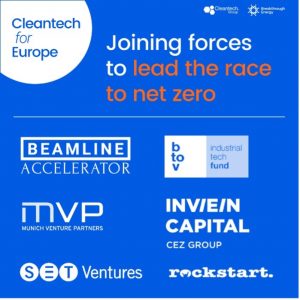
We are excited to announce that Munich Venture Partners is joining forces with the Cleantech for Europe initiative to fight for a greener and fairer economy together with Beamline Accelerator, btov Industrial Tech Fund, Inven Capital, Rockstart, and SET Ventures. Combined, we have invested in more than 150 innovative low-carbon startups and scaleups so far, including global leaders such as Sonnen or Sunfire. Our aim is to build a collective voice and convey to policymakers as well as other stakeholders the importance of investing in the next generation of clean technologies.
Specifically, the Cleantech for Europe initiative calls on the EU to:
- Create a demand shock for green solutions. Create sectoral transition plans. Implement a predictable and progressive price on carbon. Accelerate green public procurement.
- Support the creation of at least 10 EU scale-up funds. Increase non-dilutive funding. Leverage public-private instruments such as carbon contracts for difference.
- Support cross-border scaling. Harmonize regulations and standards to allow innovative companies scale from one country to the continent. Develop integrated value chains across all member states.
Based on our long experience in the cleantech sector, we trust to be able to support the Cleantech for Europe initiative with our technical expertise, sector knowledge, as well as our learnings in scaling up cleantech businesses.
We hereby would like to thank the Cleantech Group and Breakthrough Energy for setting up the initiative. We look forward to working together and to welcoming interesting partners to our initiative. We are confident that if we succeed at scaling up cleantech, the EU will lead the race to net zero.
About Cleantech for Europe
Cleantech for Europe is an initiative created by Cleantech Group, supported by Breakthrough Energy and leading EU cleantech investors. Our mission is to help the EU lead the race to net zero while creating long-term industrial competitiveness. We aim to put innovation at the center of the public policy debate and build bridges between the EU’s cleantech community and policymakers in Brussels and member states.
MVP Sustainability Report 2021
In addition to generating superior financial returns for our investors, MVP’s investment strategy also focuses on investments generating positive environmental and societal impact. We therefore put great effort in our portfolio companies not only leaving the lowest environmental footprint possible as well as applying the highest social standards, but enhancing nature and society as a whole.
To illustrate the ESG-development of our investees as well as our own sustainability efforts, MVP publishes a yearly sustainability report. Next to these topics, this year’s report also covers:
> Our approach towards sustainability
> Reaching CO2-neutral fund operations
> How our investees contribute to the SDGs
> How we use the Triple Top Line for holistic value creation.
MVP Sustainability Report 2020
The MVP Sustainability Report 2020 is now online. As a signatory of the UN Principles for Responsible Investment, we put a great effort in our portfolio companies not only leaving the lowest environmental footprint and applying the highest social standards but enhancing nature and society as a whole.
You should definitely not miss out this year’s booklet if you are eager to learn more about:
- Our approach towards sustainability
- The ESG (Environmental, Social, and Governance) performance of the MVP portfolio, including the nomination of our first ESG Champion
- Why we decided to go a step beyond the standard ESG approach
- How we are currently implementing the Triple Top Line approach into the Venture Capital world
Grab a coffee and have a good time reading!
Introducing the Triple Top Line
The integration of ESG (Environmental, Social, and Governance) factors into investment processes and decision making has seen tremendous growth in recent years. Additionally, with the investment world adopting an active role in achieving the UN Sustainable Development Goals (SDGs), we see a rising need for a framework enabling sustainable and quantifiable value creation as well as a straightforward implementation. We believe to have found the solution in the Triple Top Line. But first, let’s see why the Triple Top Line excellently meets today’s Zeitgeist and how it takes our sustainability practices to the next level.
> The rise of ESG < Investors trimming their portfolios for sustainability, food manufacturers praising the CO2 neutrality of their production, or companies marketing their coal phase-out planned for the next two decades, are all to be understood as reactions to changing customer needs and – ultimately – as a fight for legitimacy and survival. The race for sustainability just entered a new dimension.
There is no doubt that industrialization has contributed to social welfare by supplying high-quality products adapted to human necessities as well as by ensuring the right working conditions for employees. But our globalized system also made it easier for some companies to plunder natural resources, exploit cheap labor, and exacerbate the inequality of wealth by earning profits from their operations in less developed countries and distributing them to their shareholders in wealthier ones. But these times are coming to an end. With our society facing extreme challenges such as climate change, infectious diseases, and resource scarcity, our economies will have to undergo a profound structural change and companies will have to take action.
And many of them already did. 2019 could certainly be called „The Year of ESG” (Environmental, Social, and Governance), with daily announcements from companies having implemented ESG criteria, having reached 30+ of ESG key performance indicators (KPIs), or having achieved 100% ESG conformity. This comes slightly delayed, but is a step in the right direction and is actually based on scienetific results. A study conducted by Harvard Business School’s Serafeim showed that companies having developed organizational processes to measure their ESG performance in the early 1990s outperformed a carefully matched control group over the next 18 years. Similar results are provided by Nordea Equity Research as well. And let’s not forget customers for whom ESG compliance is not an option anymore – but a duty.
As a signatory of the UN Principles for Responsible Investment (UNPRI), Munich Venture Partners (MVP) has a longstanding history in measuring the impact of its portfolio through company specific ESG KPIs. Besides learning a lot about our investees’ operations, our ESG experience also taught us why ESG is a perfect tool for negative screening and early risk identification but incomplete when it comes to outlining the whole impact of our portfolio. Particularly by mainly focusing on the past (12 months’) performance, ESG neglects the huge potential of early-stage companies, which just might need some additional years to be able to shine with huge numbers. Moreover, by separately tracking environmental, social, and governance factors, ESG neglects the interaction between these pillars and misses out the impact of each on the other.
> Taking one step at a time < Unlike ESG – which by establishing policies and processes guarantees a minimum level of sustainability, the UN Sustainable Development Goals (SDGs) are more output oriented and illustrate how investment decisions impact the broader environment and society as a whole. As we believe this better reflects the fast-paced and future-oriented Venture Capital sector, we decided already in 2018 to go beyond the standard ESG approach and linked the E/S/G KPIs we have been tracking to the SDGs. We are thereby guiding our investees towards long-term orientation and focusing on the road that lies ahead.
However, we see a rising need for an assessment framework which can deal with individual requirements, may it be startups, venture capitalists, or fund investors, the complex structure of the SDGs, and – above all – their holistic nature, meaning that all goals must be achieved in unison. To put it another way – if we want to achieve the SDGs by 2030, we need to get structure in our impact assessment. But how?
> Adapting the past < Developed 25 years ago, the Triple Bottom Line seemed to be the answer to increasing pressure on organizations to deliver performance that is socially equitable, environmentally responsible, and economically sound. These Triple Bottom Line domains of People, Planet, and Profit have defined long-term strategies of global corporations and have shaped the view that to be truly sustainable, a balance must be struck between all three. However, by purely focusing on the management of negative effects, the approach has also been criticized for missing out many opportunities of innovation and value creation.
> Introducing the Triple Top Line < Whereas the Triple Bottom Line mantains an aging system by reducing its negative impacts, the Triple Top Line concept developed by W. McDonough and M. Braungart builds the foundation of a new one, which rather than balancing economic, ecological, and social equity targets, chooses to employ their dynamic interplay to concurrently generate value on all pillars.
The Triple Top Line is embodied in a fractal triangle. When using this tool, the starting point is the top corner[i] of Economy – Economy as the first aspect to be considered is whether a product can be offered at a profit or not. If that is not the case, the process ends here due to lacking economic viability. Otherwise, one can start moving around the fractals and examine how progress can be generated in each. In W. McDonough and M. Braungart’s model this is attained through questions as: Will our production process use resources efficiently? Are we finding new ways to honor everyone involved, regardless of race, sex, nationality, or religion?

> Using the Triple Top Line < Our first step in implementing the Triple Top Line into the Venture Capital world meant translating the SDGs into investible opportunities and linking them to the fractals of the Triple Top Line. Inspired by the original model, we then elaborated our own set of questions for each fractal. We thereby took into account the value creation opportunity in the respective fractal as well as the sub-targets of the assigned SDG(s).
By condensing it down to 9 simple questions – one for each fractal – and deriving tangible measures and KPIs out of these, we found a straightforward way of implementing the Triple Top Line on a portfolio company level.
We use the Triple Top Line both pre-investment, to evaluate startups as part of our Due Diligence processes, as well as during the active holding period, as a very effective controlling and guidance tool. On a yearly basis we evaluate the progress achieved by our investees in each fractal, analyze where there is still room for improvement, and set new targets. Additionally, an underlying scoring system enables us to track and compare the progress of our portfolio companies.
Through this mechanism we adhere to one of the guiding principles of the Triple Top Line: Be efficient and effective. Effectiveness means doing the right things – which for us translates into contributing to the SDGs – while efficiency means doing things the right way – which we ensure through our KPIs.
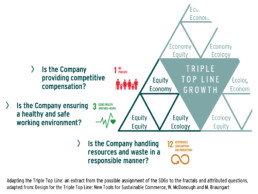
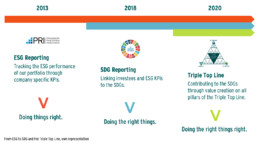
> What we particularly like about the Triple Top Line < The Triple Top Line aims for a sustainable industrial system, generating economic returns while enhancing nature and society. By concurrently maximizing value on all three pillars, the Triple Top Line points out that economic growth, environmental gains, and societal value creation are not only interconnected but mutually reinforcing each other. By using the Triple Top Line, we can assure that our investments are contributing to the SDGs in a holistic manner and with quantifiable results. For us and our fund investors this translates into over-proportional financial returns accompanied by value creation on two additional pillars.
By narrowing it down to 9 simple questions and derived targets, we enable our portfolio companies to focus on high-leverage measures without losing sight of the big picture. Additionally, rather than using their resources to report on umpteen KPIs, our portfolio companies can focus on identifiying the measures with the highest impact. For us, the adapted Triple Top Line is a tool which enhances continuous progress through small – but very effective – steps and through clear targets.
> The window for action is open < The SDGs represent an urgent call for action. If we want to limit global warming within the acceptable range of 1-2°C compared to pre-industrial levels, meet the challenges of a growing population – and so many more – the main actions need to be triggered today.
Successful entrepreneurs have recognized that the most important ingredient for their secret sauce is a good relationship with society and the environment. These mission-driven leaders are just about to disrupt existing industries by leveraging technology and breakthrough innovations. Reduced emissions from a renewable-based energy sector, the rising uptake of shared mobility, and a more efficient manufacturing sector will lead to an increasingly decarbonized world, while IoT solutions within the food sector will reduce food waste and help us sustainably feed a growing population.
Many solutions are already out there, let’s put them into practice together.
[i] In the original model Economy is the bottom right corner







